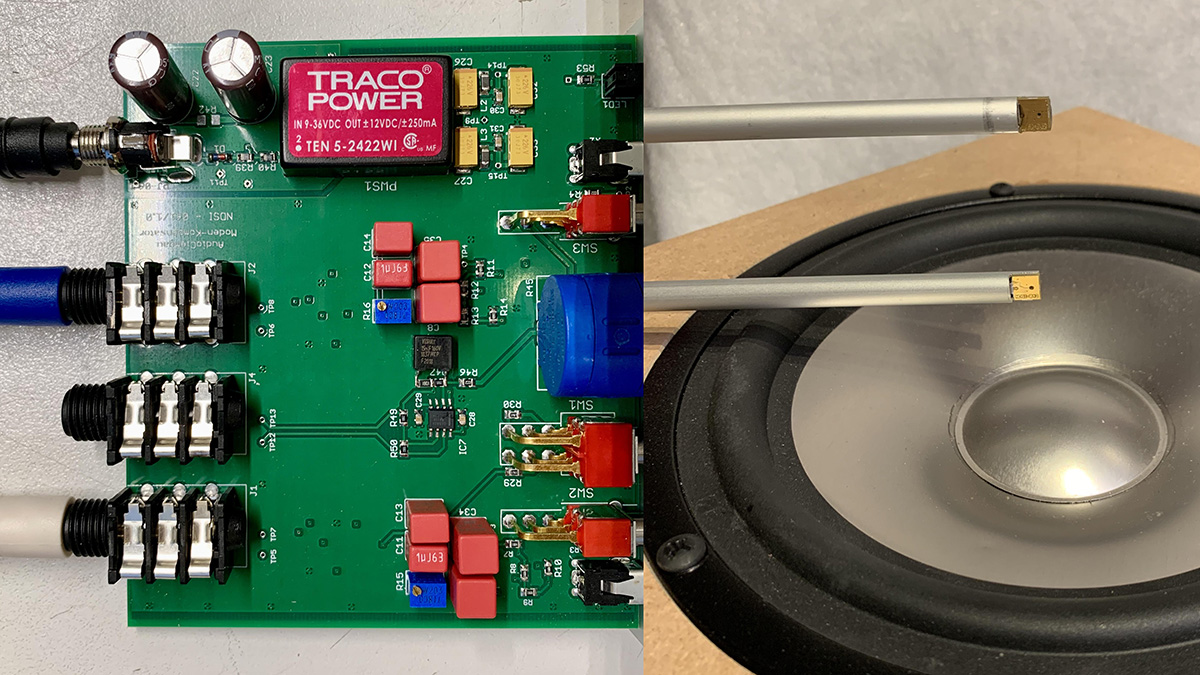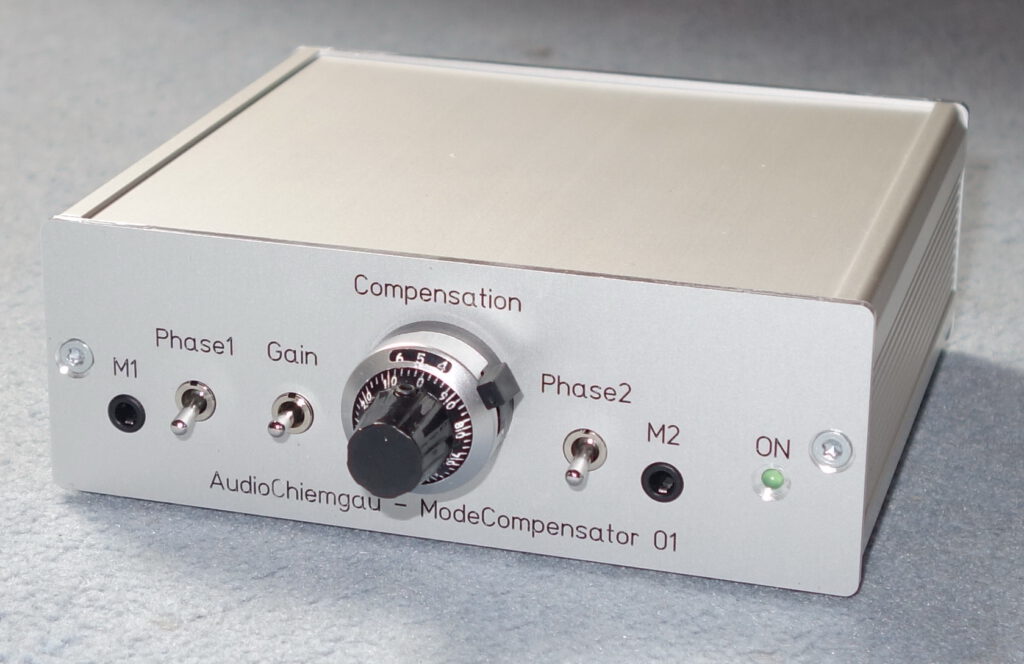technique of making quasi anechoic measurements in regular rooms down to 10Hz.
The method has no real advantage in correctly measuring the frequency response of loudspeakers, only when measuring drivers in an infinite baffle - see details below.
This method has small advantages over a near-field measurement of a driver at a distance of <0.01m from the dust cap, as at a distance of 0.05m (first mic), for example, possible resonances due to the driver surround would have a slightly greater influence on the overall frequency response (thus would be more realistic).
There is a further small advantage if harmonic distortion in the near field is also to be measured during the FR measurement. With only one microphone, the measurement distance must be significantly reduced in order to suppress room influences similarly well - for example to 0.01m, but this means a 14dB higher sound pressure level at the microphone (as a result, the distortion of the mic influence the distortion measurements of the driver earlier).
Do we even care once the wavelength approaches tens of meters? The device is accurate up to 1kHz, wich in air has a wavelength of 34.32cm. I suspect this is when things get out of whack. It also means your front baffle is ~68cm wide, a monster speaker!
To determine the entire frequency response of a loudspeaker from 20-20000Hz accurately, this method has practically no advantages over the usual method of near-field measurement at the driver (<0.01m), baffle step correction and subsequent merging of near-field measurement and gated measurement of the speaker - on the contrary, frequency response deviations occur even earlier because of the 0.05-0.1m measuring distance.
The usual baffle step correction takes a two-dimensional model of the baffle (height and width) and simulates its influence on the frequency response.
The depth of the cabinet is not taken into account.
This has consequences for the validity of the simulation in relation to the upper frequency limit.
Furthermore, when applying the baffle step correction, the signal to be corrected must not contain any baffle influences (otherwise influences would be applied several times). Therefore, the near-field measurement should be performed as close as possible to the dust cap in order to minimize the influence of the DUT (dimension of the DUT ).
The rule of thumb is: measuring distance <0.11*"largest dimension DUT" delivers FR with error <1dB.
Upper frequency limit for correct performed near field measurements dependent on source size:

Source: Arta Handbook
A measurement distance of 0.05-0.1m, as used in the "double microphone method", already contains significant DUT influences (depending on the dimension of the DUT). Only at very low frequencies do these play only a minor role.
In order to be able to apply a baffle step correction without large errors, the frequency at which the near-field measurement is combined with the gated measurement must be set particularly low when using the "double microphone method" near field measurements, so one can't use in no way the "accurate FR" up to 1kHz of the "double microphone method".

 audioxpress.com
audioxpress.com



 audiochiemgau.com
audiochiemgau.com




